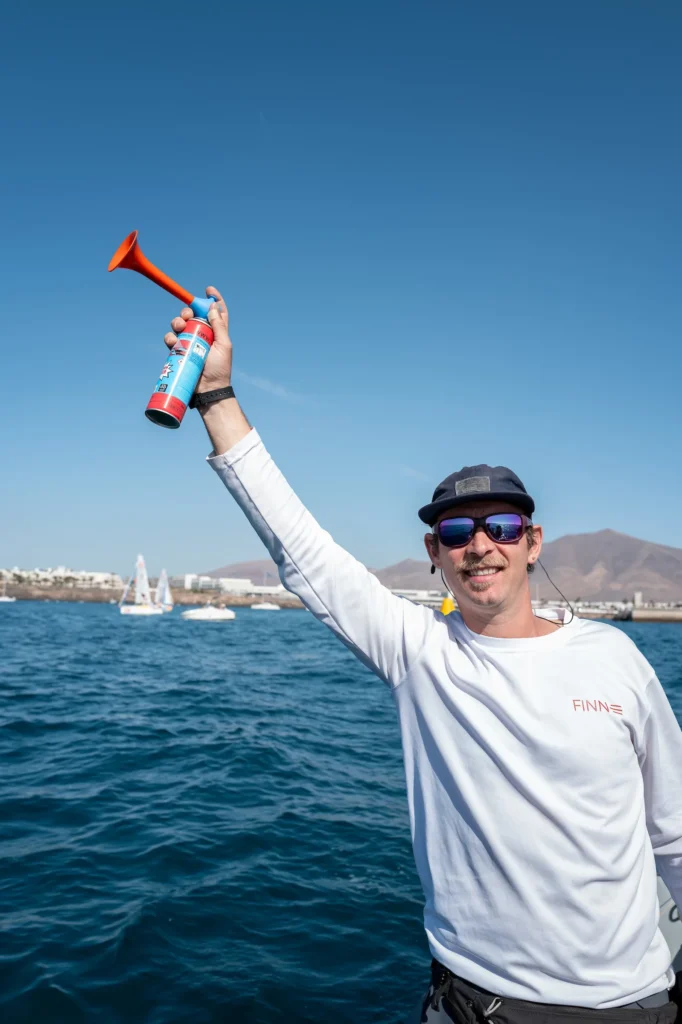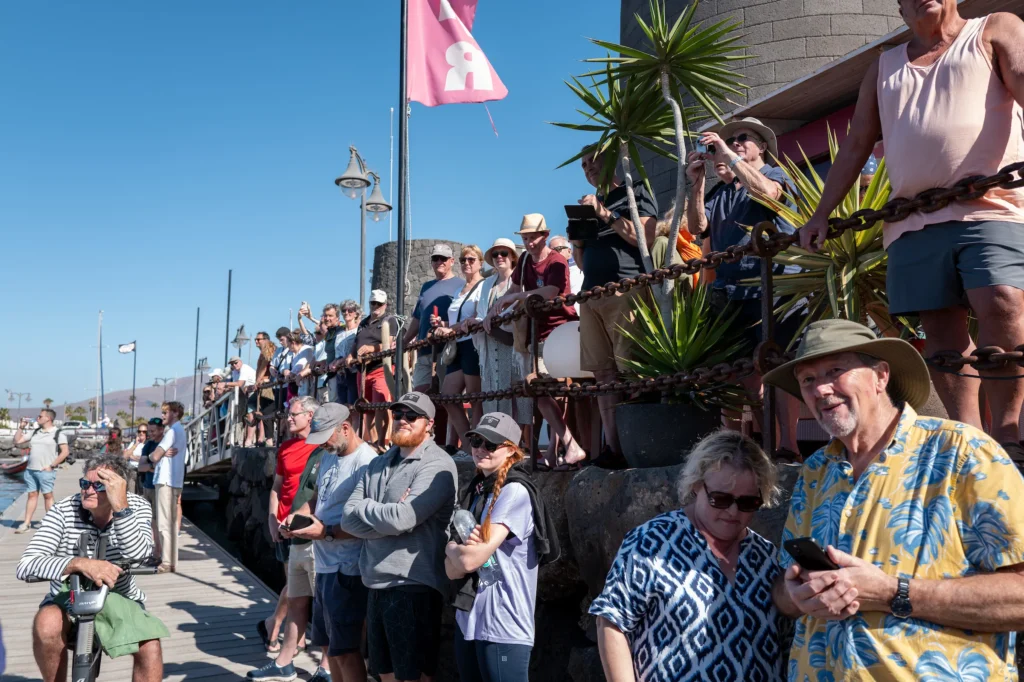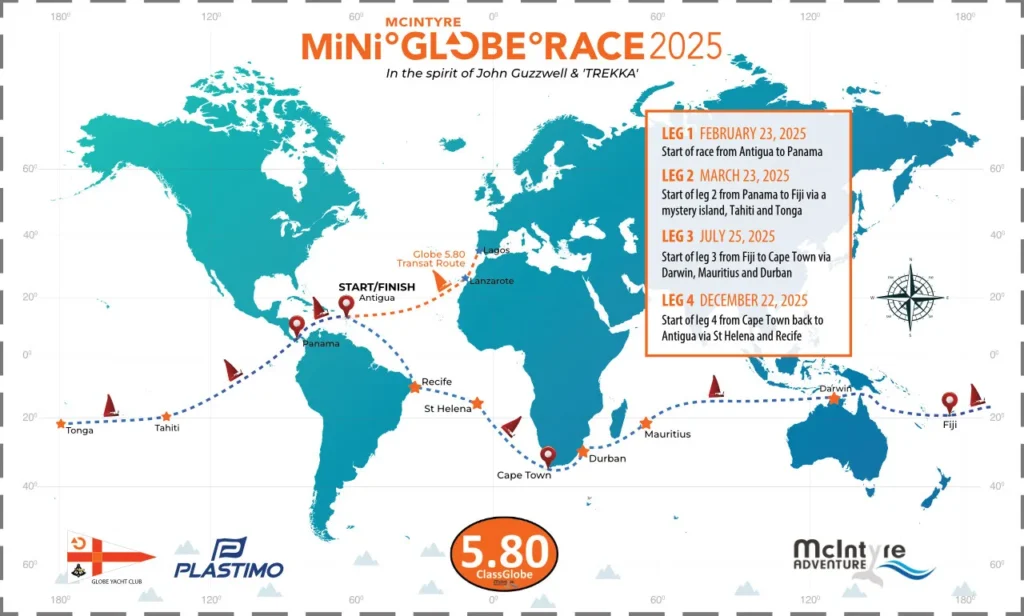Mini Globe Race
Swiss sailor Renaud Stitelmann set off at the end of February on the Mini Globe Race, a single-handed round-the-world race with stopovers on a 5.80 m one-design boat. After winning the transatlantic race to the start in Antigua, the 61-year-old accomplished sailor is one of the favorites.
At a time when some finish a solo round-the-world monohull race in less than 70 days, others have set off around the globe on frail skiffs, with the prospect of coming full circle in… 260 days at sea. The Mini Globe Race, which follows the tropical zone – apart from rounding the Cape of Good Hope – is unique in that it is contested on yachts barely larger than Corsairs, at an average speed of 5 knots. Among the competitors, Renaud Stitelmann, a well-known racer on Lake Geneva and Lake Neuchâtel, set sail from Antigua at the end of February. I’m realizing a dream,” said the skipper, contacted by telephone two weeks before the start. It’s a format and a boat that suit me, centered on the man. I do everything myself, I live aboard, I’m autonomous and I appreciate this minimalist aspect.”
Fast and always calm
Renaud Stitelmann is an experienced racer, twice winner of the Bol d’Or and three times winner of the 5 Jours du Léman. He finished second in the last solo Translémanique and won it in 2017. Known for his unfailing calm, those who have worked with him are not surprised to see him line up for this race. It’s a regatta made for him,” confides Darius Golchan, who has sailed the 5 Jours with him twice, as well as three seasons in M2. He’s a man of the elements and of feeling, with an extraordinary understanding of phenomena.” Valentin Gautier, Class 40 racer and former administrator of the Centre d’Entraînement à la Régate – which Renaud frequented in the 80s – speaks in similar terms: “What characterizes him most is his calm. He never gets angry, even in critical situations. I discovered with him that it’s possible to navigate without shouting. What’s more, he really enjoys being on the water. That’s essential for a race like this, where time can be very long. What’s more, his weather analyses are always very coherent. That’s one of his great strengths. After winning the transatlantic race between Lanzarote and Antigua earlier this year, Isidore – his nickname in sailing circles – is approaching this round-the-world race with his characteristic nonchalance and discretion: “I’ve made my way alone on the basis of my experience. During the first qualifying leg between Lagos and Lanzarote, I scored a nice weather shot. Then, on the transatlantic, I applied myself to keeping a good average speed, working on the VMG, and it paid off.” The interested party, who remains very humble about his results, noted as he stepped ashore on his arrival in Antigua: “I’ve had nothing but fun!”
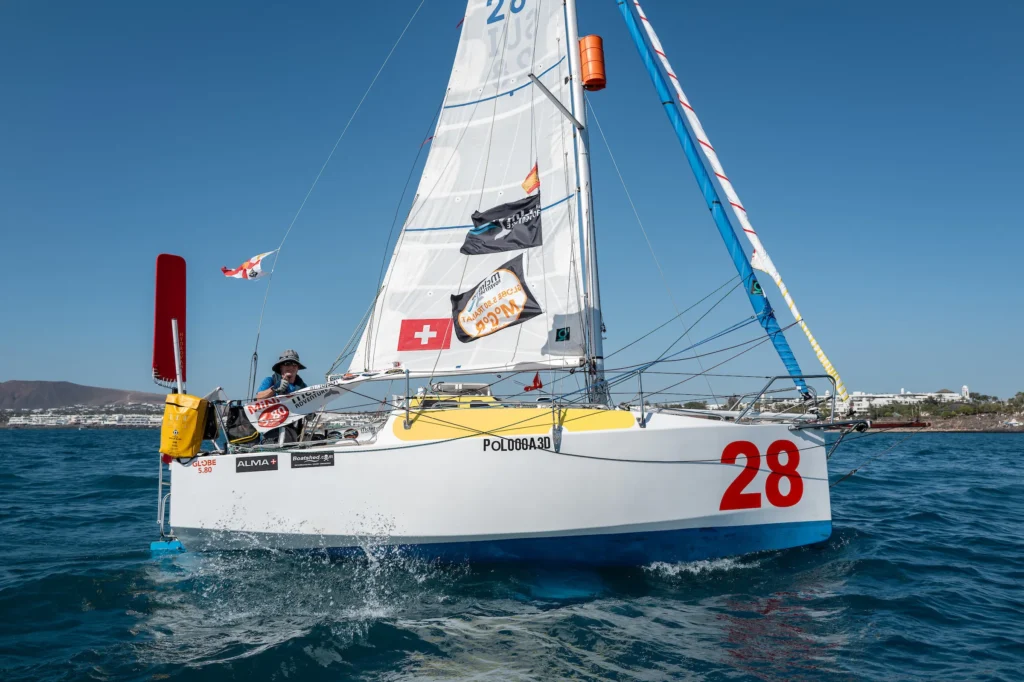
IS ONE OF THE FAVORITES IN THIS UNUSUAL EVENT. ©Rob Havill/MGR2025
Old-fashioned, but not only!
The principle of the Globe 5.80 class is minimalism, while using safety tools in line with the needs of such small boats. Competitors can use a satellite connection to retrieve weather files and communicate with land – Renaud Stitelmann is very active on his Facebook page. Sophisticated routing software, however, remains prohibited, with the exception of Windy-type software. Basic autopilots (for course setting only, with no connection to instruments) are authorized, in addition to the windvane steering systems fitted on all sailboats. The pilot is for troubleshooting in certain conditions,” explains Isidore. These are what I call ‘tug-of-war’ models, which have no intelligence whatsoever. It doesn’t work in waves, so we use it very little.” GPS is also part of the standard equipment, but each participant had to demonstrate his or her ability to master astronomical navigation. For the rest, everyone had to be self-sufficient in drinking water and, of course, food for stages that could last around forty days. On this point, the Swiss skipper made no concessions to comfort. “I don’t want to settle for freeze-dried food. I take fresh produce with me, and I eat one hot dish a day. I bake bread and cakes at sea. It’s part of my approach, I want to feel good on board.”
Rising class
The Globe 5.80 class is aimed at a very heterogeneous audience of purists, including not only experienced racers. There are artists, engineers, former pilots… people from all walks of life,” points out Don McIntyre, the man behind this unusual round-the-world voyage and already organizer of the Golden Globe Race and the Ocean Globe Race. He continues: “Renaud isn’t your typical Globe 5.80 owner, because there simply aren’t any, there’s everything. What I can say is that he’s an intelligent racer who uses his head before his muscles. He knows how to listen to his boat and make it work. He’s definitely one of the favorites. The Globe 5.80s, designed by Janusz Maderski of Poland, are made of epoxy plywood, and can be built relatively easily for a budget of less than CHF 40,000. Isidore had his hull built in Poland, and fitted out the boat at home in the Estavayer region before the first trials on Lake Neuchâtel in 2022. As for the event itself, this is its first edition, with fifteen competitors taking part. Given the success of the class – with over 25 boats already built, and a good 50 planned – Don McIntyre already knows that he will repeat the exercise in 2029 with 20 boats, the maximum limit he has set himself. For the time being, it’s all about reaching the end of this long road, which Renaud Stitelmann could well win.
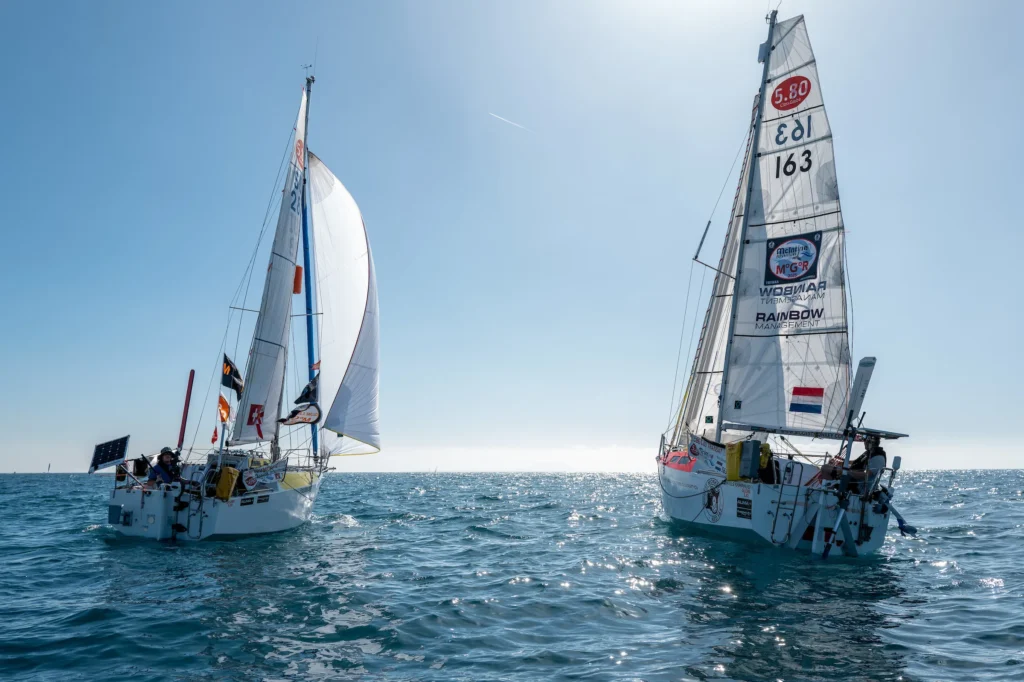
doesn’t mean the GLOBE 5.80’s don’t have drawn knives ©Rob Havill/MGR2025
Mini Globe Race schedule
Leg 1: Antigua (February 23, 2025) to Panama (1’300 nm). Transport by truck through Panama.
Leg 2: Panama (March 24, 2025) to Fiji with pit-stops in Tahiti and Tonga (6’500 nm).
Stage 3: Fiji (July 25, 2025) to Cape Town, with pit stops in Darwin, Mauritius and Durban (9’700 nm).
Leg 4: Cape Town (December 28, 2025) to Antigua, with pit stops in St. Helena and Recife (6’100 nm).
Arrival in Antigua scheduled for March 2026.
To follow the Mini Globe Race: minigloberace.com


